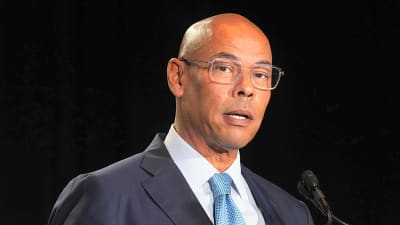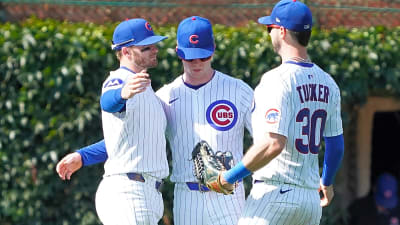Earlier this month, Mid-Atlantic Horse Rescue co-founder Bev Strauss got a call from a horse trader she knows named Marlon Garcia. Garcia used to be a co-owner of the Cranbury Sale Stable in Cranbury, N.J., and is now a trader based in New Jersey who buys and sells horses.
Garcia told Strauss he had just picked up a group of five Thoroughbred broodmares and four yearlings from a breeding farm in New Jersey. Four of the mares were pregnant. He was hoping the rescue might buy them.
Mid-Atlantic Horse Rescue is a Thoroughbred Aftercare Alliance-accredited organization which has rehomed more than 2,500 Thoroughbreds in its lifetime. Horses come to Strauss for rehoming in a variety of ways. Many come straight off the track from their racing connections; some are surrendered by owners years after they stopped being racehorses. And some, like this group, are horses Strauss tries to get before they end up in the kill pen pipeline.
Like many involved with rescues that specialize in Thoroughbreds, Strauss is also familiar with the kill pen and bail pen pipeline. While there has been no commercial meat plant conducting horse slaughter in this country for many years, the practice does still go on legally in Canada and Mexico. To meet demand, the plants in those countries contract with horse dealers in the United States to bring in a consistent supply of horses. U.S. Department of Agriculture records the number of horses exported at either border for the purpose of slaughter, and its year-end reports show those figures have declined precipitously. According to the Humane Society of the United States, 166,000 horses were exported for slaughter in 2012, while the number exported to Mexico last year was 17,997 (Canadian figures haven’t been released yet but in recent years have been a fraction of Mexican exports). So, while numbers are down, the practice does still go on, and American horses who find themselves suddenly without much economic value to the people immediately around them are at risk of getting caught in the pipeline.
Traders may acquire those horses at regional livestock and local horse auctions or from individuals who may sell, trade, or give away those horses. Traders, according to Strauss and others who deal in this side of the horse world, are interested purely in the economics of buying and selling horses (not unlike livestock dealers who work with cattle, and in fact some of them do both).
“Owners have to understand that giving these horses away to dealers is just putting money in their pocket,” said Strauss. “These guys don’t have any concern about the horse, they just turn around and dump them at an auction or directly at a kill pen, take their money and go home.”
Garcia told Strauss that he would likely send the group of Thoroughbreds to New Holland Sales Stables in New Holland, Pa. New Holland is notorious in horse rescue circles because while it is patronized by people who want to buy horses as riding or driving prospects, it’s also a frequent source for traders who want to sell horses destined for foreign meat plants.
With the growth of social media, traders who do work with meat plants, and those who don’t but claim to, have their own cottage industry. They can now buy a horse at auction and post it on Facebook, hoping an individual or a rescue will pay them an escalated price to “bail” the horse out of their holding facility before the horse is allegedly scheduled to ship across the border to be killed. “Bail pens,” as these operations are called (or “kill pens,” referring to the threat the horses will eventually be killed), usually do not allow individuals to see horses in person prior to purchase, and do not allow veterinarians on their facility to conduct pre-purchase exams. In other words, they’re selling horses in circumstances that automatically disadvantage the buyer, and which buyers wouldn’t tolerate in any other commercial context. They include a deadline in their social media sales post by which time they say they must receive their price or else they will put the horse on a truck. The price of horses in these situations is, of course, higher than what the bail pen operator paid for the horse at auction, and often much higher than the same horse could possibly bring if sold in any other circumstance.
“They do seek out the Thoroughbreds,” said Strauss. “When we first started the rescue 20-some years ago, you’d go to New Holland and they’d try to pass the Thoroughbreds off as appendixes [Quarter Horse crosses] or whatever. They’d never announce it as a Thoroughbred. And then, as it all turned around and the whole fake kill pen stuff happened, now they proudly flip their lip and say it’s a Thoroughbred. Let the money come in. Because there’s people out on the internet world who are going to try and identify the horse, and contact whoever might have had a hand on the horse, even if it was 15 years ago, to get money or whatever.”
Strauss, who makes a study of the kill pen and bail pen pipeline through her rescue work, said that with the long-term decline in demand for horse meat, she believes there are only a couple of American traders who now have active contracts with meat plants and who are therefore really likely to send weekly truckloads across the border. The others (and there are many others) are likely bluffing – though it’s also true they probably know how to get a horse to a trader with an active contract if they can’t get their demanded bail price for the horse.
Garcia initially told her he thought he’d get $2,000 for each horse at New Holland. Strauss called his bluff. Her guess is he would have sold each horse for about $900, and that they likely would have gone to one of the two major bail pen operations in the Northeast, where they’d be listed on Facebook within days for close to $2,000 each.
In Strauss’ experience, Thoroughbreds at livestock auctions or in these bail pens struggle. They often emerge with injuries that may have come during their hauling process or in fights in holding areas with horses or humans. It’s common for them to exhibit signs of communicable diseases, brought on by stress or a lack of biosecurity. Buying a horse from Garcia allows her to get them upstream of that process, for less money, and with less need for intensive veterinary care afterwards.
Eventually, Strauss was able to negotiate with Garcia, and got the group of nine for $8,000, including delivery to her Maryland base. It’s several times more than she believes Garcia paid for them, but certainly less than what it would have cost to get them away from a bail pen operator.
If you spend enough time in the right corners of social media, you’ll see that it’s common for Thoroughbreds to pop up in the system Strauss was able to pluck this group from. Bail pens command enormous Facebook followings, often numbering in the tens of thousands, which enables them to sell horses at their demanded price quickly. (Sales posts for those horses almost always disappear as soon as they are sold, making it hard to track a horse who’s been through a facility.) Devoted Facebook followers will identify those horses if they can, using microchip readings or (for older bloodstock) tattoo numbers – allowing casual animal lovers to connect those horses to their records in Equibase. Many of them will also leave furious comments on the bail pens’ posts, expressing outrage at the horse racing industry for allowing its participants to end up in these situations.
It's often unclear how those horses got to the auction where they were sold, and the route becomes more difficult to establish the longer they’ve been away from the racetrack.
In this case, all the yearlings were by New York stallion Joevia, and the mares’ 2022 foals were also by Joevia, though their 2023 covers were all to different stallions in New York. More than a year ago, Joevia co-owner Michael Fazio owned the mares, who were part of his in-house program to support his stallion. Fazio says that he was initially a little too enthusiastic in the number of mares he bought to send to his stallion, and decided he wanted to sell this group of mares, who at the time hadn’t foaled the current Joevia yearlings. He made a deal through his trainer to sell the horses to fellow New Jersey owner Michael Ravallo. Fazio still owns Joevia, who he said is taking some time off stud duty at his Synergy Stables in Colts Neck, N.J. Fazio said he expects Joevia will be back in the shed in 2025, and has a number of the stallion’s first crop, who he hopes to run at Saratoga this summer.
When contacted about the group of horses with Mid-Atlantic Horse Rescue, Fazio said he was shocked.
“That’s a disgrace,” Fazio said. “I’m thinking I’m doing these guys the biggest solid. To have it backfire like this is crazy. To think that this is what [the horses] have come to, it’s a disgrace.
“No one called me and said, ‘Hey, we don’t want these horses anymore.’ I would have taken them back. I’m breeding because I want to win the Kentucky Derby. I love it. I love these horses. I live for it.”
The last Fazio knew, Ravallo had sold a part interest in the horses to Carmine Spinella. Spinella purchased the former Colonial Farms in Colts Neck – down the road from Fazio’s sport horse facility at Synergy Stables – and turned it into Pegasus Stud in 2022. Pegasus stands three stallions and offers foaling and boarding in addition to housing its own stock.
When reached by the Paulick Report, Spinella said he had been out of town for the past two months and wasn’t sure what had happened but planned to check in with his farm manager. A subsequent text to Spinella was unreturned.
Sources told the Paulick Report it’s unlikely an owner/breeder like Spinella, just two years into having his own farm, knew that calling a dealer like Garcia could put the horses at risk of ending not just their participation in Thoroughbred racing, but possibly their lives.
And why would he?
There is no centralized, required on-boarding or continuing education process for owners before they may become licensed, and no licensing process for breeders at all. Industry-wide awareness of aftercare has grown tremendously in the past decade, but an awareness of the bail pen economy hasn’t necessarily grown with it. Most people – horse lovers, rescues, keyboard warriors – who are aware of the bail pens have come to understand them mostly by watching their behavior on social media, not because there are significant educational resources put out by breed or horse sport organizations explaining how the process works.
Most owner or breeder-facing education initiatives on aftercare focus on connecting owners to existing accredited groups or encouraging them to retire horses before they incur chronic injuries that will limit their futures. Most of those continuing education segments mention the bail pen pipeline in passing, without much detail for people who haven’t heard of it.
Horsemen U, an online continuing education database run by Thoroughbred Horsemen’s Association and California Thoroughbred Trainers, has one video on aftercare which focuses on avoiding One Last Race Syndrome. A series of educational panel discussions uploaded to YouTube last year by The Thoroughbred Owners and Breeders Association included one video on aftercare in its line-up of ten topics. That video had the least views of any in the series, and it was not close.
There is also no particular punishment for owners and breeders who sell horses to traders or directly to bail pens. It’s not illegal for owners and breeders to do this and so their licenses aren’t impacted. The Jockey Club does revoke stud book privileges from individuals based on its Rule 19, which states in part that this can happen if someone “killed, abandoned, mistreated, neglected or abused, or otherwise committed an act of cruelty to a horse.”
The rule doesn’t apply to situations like this one, according to Shannon Luce, vice president of communications for The Jockey Club, because there must be “a final determination by a court (whether civil, criminal, or administrative), an official tribunal or an official racing body” that the horse has been abandoned, mistreated, etc.
For Stacie Clark Rogers, operations consultant for the Thoroughbred Aftercare Alliance, the evolution in the industry’s discussions of aftercare is synonymous with a recognition that not properly vetting someone willing to take a horse can lead to a poor outcome for the horse.
“Seller beware – it’s not always a good thing when someone comes along and relieves you of your horse,” said Clark. “You don’t have to be responsible for the horse once someone else owns it, but make sure you understand where the horse is ultimately going.
“It shouldn’t be the burden of these aftercare groups to go help horses in bad situations because the owners ‘didn’t know,’” she said. “That whole cottage industry thrives on people not doing their diligence.”
The TAA accredits and helps to partially fund accredited Thoroughbred aftercare programs in North America. Accredited programs have varying policies on whether they’re willing to buy horses from dealers, from livestock auctions, or from bail pen operators. Regardless of those policies, Clark said, TAA funds can only be used for horse care, so when rescues are buying horses out of the bail pen system, those organizations have to come up with that money themselves. It’s much easier for everyone if owners contact those organizations directly instead of placing a horse in the bail pen cycle. As far as Clark knows, no owner has ever been told a TAA group can’t help them if they have horses they need to get off their farm.
This story ended (mostly) happily. Strauss found placement for the yearlings before they even arrived to her Maryland base – in the University of Pennsylvania’s research program, where they will be participants in non-terminal, exercise physiology studies on the school’s equine treadmill. Karen Wilkinson, a New Jersey breeder, took the four mares who were in foal – just in time, as the first one foaled on March 17.
Strauss has been working with the stallion farms that stand the covering sires on the pregnant mares, gradually coming to arrangements to deal with missing service certificates, unpaid fees, and residency requirements so that the 2024 foals will be registrable and therefore have a built-in Plan A for their future. Of the $9,000 the rescue put out to secure and transport the group, she has received $4,500 in donations from stakeholders in New York and New Jersey who helped her organize the situation. She’s still short $4,500, and still has the last of the broodmares, who was barren and will be restarted under saddle and placed up for adoption. That mare is one in approximately 100 horses in Mid-Atlantic’s care at any given time.
Strauss and Clark agree the best thing an owner or breeder can do for themselves and for their horses is to call an accredited non-profit directly if they want a horse off their bill quickly. In the meantime, they’re hopeful that awareness of the bail pen cycle will grow outside their own circle.
“I think it’s an education thing,” said Strauss. “I think as our racing industry ages out, the younger people are aware, or they should be. But I also think it’s a bit of an inconvenience for people to actually think about what happens after the horse is done running.
“I think a lot of people know, but they don’t want to know, and they think it’ll never happen to them. And then when it does, they’re horrified.”
More must-reads:
- Chargers RB Najee Harris injured in fireworks incident
- 2026 NFL Draft intel: Clemson star leads defensive 'gold mine'
- The 'NFL Offensive Rookie of the Year winners' quiz
Breaking News
Trending News
Customize Your Newsletter
 +
+
Get the latest news and rumors, customized to your favorite sports and teams. Emailed daily. Always free!








